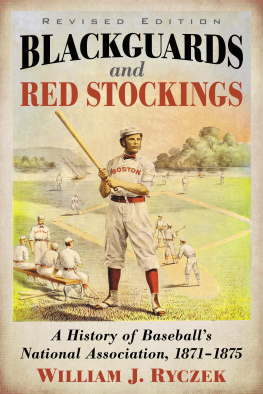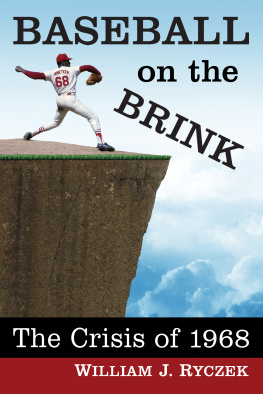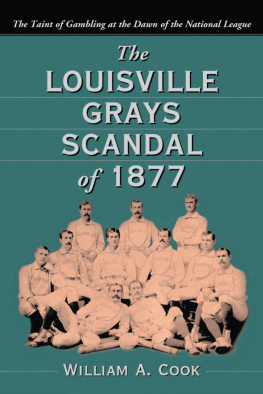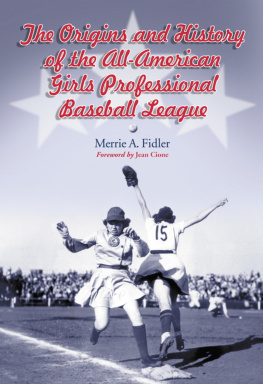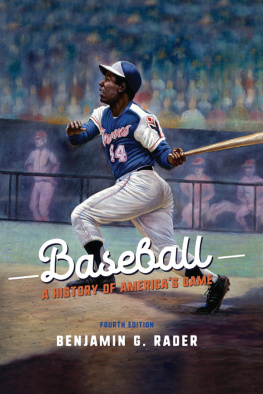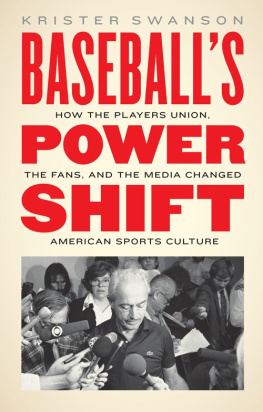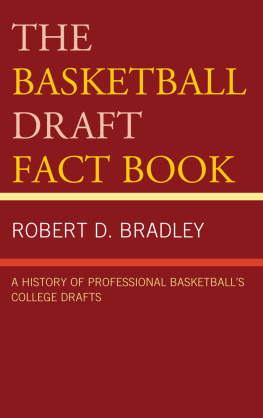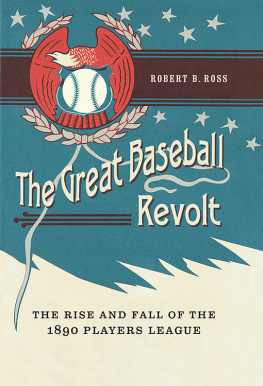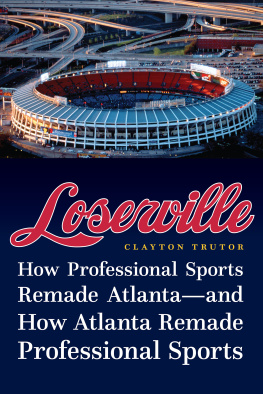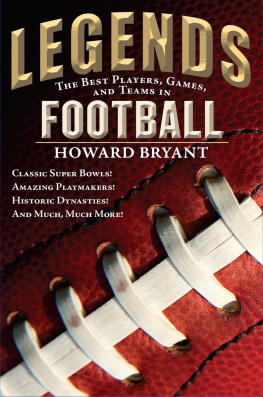
Also by WILLIAM J. RYCZEK
AND FROM MCFARLAND
Connecticut Gridiron: Football Minor Leaguers of the 1960s and 1970s (2014)
Crash of the Titans: The Early Years of the New York Jets and the AFL, rev. ed. (2009)
Baseballs First Inning: A History of the National Pastime Through the Civil War (2009)
The Yankees in the Early 1960s (2008)
The Amazin Mets, 19621969 (2008)
When Johnny Came Sliding Home: The PostCivil War Baseball Boom, 18651870 (1998; paperback 2006)
Blackguards and Red Stockings
A History of Baseballs National Association, 18711875
William J. Ryczek
Revised Edition

McFarland & Company, Inc., Publishers
Jefferson, North Carolina
LIBRARY OF CONGRESS CATALOGUING DATA ARE AVAILABLE
BRITISH LIBRARY CATALOGUING DATA ARE AVAILABLE
e-ISBN: 978-1-4766-2552-2
2016 William J. Ryczek. All rights reserved
No part of this book may be reproduced or transmitted in any form or by any means, electronic or mechanical, including photocopying or recording, or by any information storage and retrieval system, without permission in writing from the publisher.
Front cover illustration: 1874 Red Stockings cigar advertising display poster (courtesy Robert Edward Auctions, LLC)
McFarland & Company, Inc., Publishers
Box 611, Jefferson, North Carolina 28640
www.mcfarlandpub.com
To my father, Frank Ryczek.
I learned the virtues of industry and integrity
from his fine example.
Introduction
Revising a book first published in 1992 is like looking back on any aspect of life from the perspective of 22 years. I know a lot more about baseball history than I did then and I hope, after six subsequent books, that I can write a little better than I did then. The joy of producing a revised edition is that in writing, unlike the rest of life, one can do it all over again and take advantage of new knowledge and experience.
When I began researching Blackguards and Red Stockings in 1981, 19th century baseball scholarship had moved beyond Abner Doubleday, but not past Alexander Cartwright, still considered at that point to have played a major role in baseballs development. While researching When Johnny Came Sliding Home (McFarland, 1998) and Baseballs First Inning (McFarland, 2009), which covered the beginning of baseball through 1870, I learned from primary sources that some of the background material I had written in Blackguards and Red Stockings needed revision. Based upon information that has become available to us over the past couple of decades, I have almost completely re-written Chapter 2, which covers the years prior to 1871.
In 1981, information on 19th-century players consisted of educated guess identification of marginal players, and a list of the number of games played and pitchers won and lost records for all players. The biographical committee of the Society for American Baseball Research has since done yeoman work, and websites such as Retrosheet bear the fruit of its contributors exhaustive research, and the result is better and more complete biographical information and more accurate statistics. For this revised edition, I have incorporated those changes, and many players who lacked first names or were incorrectly identified in the original edition now have first names and correct identities. I have used Retrosheet as a resource to update all statistics.
Young people tend to be more opinionated, and perhaps a bit less cautious, and when I re-read the conclusions I reached many years ago, I found that some were not supported by my subsequent research, and I was not sure enough of others to print them a second time. If my conclusions were not supported by my current knowledge, I eliminated them. For example, I had noted that an unusual number of the 1875 St. Louis Red Stockings players died young, and backed this conclusion with a brief dissertation on contemporary life expectancy. Further biographical research uncovered the dates of death for a number of Reds that were previously unknown, and the complete picture showed that the players longevity was about what might have been expected in that era. I therefore eliminated the section. The Biographical Committee likewise ruined my clever comment about the irony of the leading hitter for the hapless 1873 Marylands being an anonymous creature named Jones, whose first name was lost in history. The darned committee learned his first name, and scratch one bon mot.
Fortunately, most of the research on the 18711875 period, particularly that garnered from primary sources, has stood the test of time, and re-reading the text revived my interest in the National Association, the first and perhaps most imperfect professional sports league. Given that weve been through a hardcover edition, a softcover edition, and now a revised edition, apparently the old NA holds some interest for baseball historians and baseball fans as well. Ive tried to convey the fascination with the 19th century that led me to tackle the project back in 1981, while updating the history and statistics to reflect the progress of 21st-century scholarship. With thanks to all those who played a role in gathering new data, the improved, updated version is presented in the following pages.
Chapter 1
Opening Day
No one threw out a ceremonial first ball and nary a celebrity vied for the honor of singing the national anthem. The pomp and circumstance associated with opening day was completely absent on the first opening day. Less than five hundred spectators watched as skinny, nineteen-year-old Bobby Mathews of Fort Wayne prepared to pitch to James White of Cleveland. Mathews was standing not on a mound, but on a flat surface between two boards that marked the boundaries of the pitchers position 45 feet from home plate. His battery mate, Bill Lennon, stood well behind the bat, in deference to the fact that he was wearing no protective equipment. Standing alongside was the lone umpire, John L. Boake of Cincinnati.
Mathews raised himself up to his full five feet five inches, brought his arm back, whipped it forward and sent an underhand delivery wheeling toward the plate. White watched it sail wide of the strike zone.

Bobby Mathews.Fort Waynes Bobby Mathews hurled a 20 shutout in baseballs first major league game. He went on to a long, distinguished career during which he won 297 games, and was one of the earliest practitioners of the curve ball. From the New York Clipper.
The date was May 4, 1871, the place Fort Wayne, Indiana, and the occasion was the first game in major league baseballs first season. It was fitting that White and Mathews faced off against each other in the inaugural, for both were much more than historical footnotes. Mathews won 297 games in fifteen years in the big leagues while White, who would acquire the nickname Deacon for his abstemious habits and pious manner, batted .348 in five National Association seasons and .312 in a total of twenty years in the major leagues. He was elected to the Hall of Fame in 2013.
Whites heroics on this day, however, were short-lived. The next batter was Gene Kimball, who lofted a popup toward second baseman Tom Carey. Carey made a fine catch and doubled White off second. The inning ended when Charley Pabor fouled out to Lennon.
Next page
